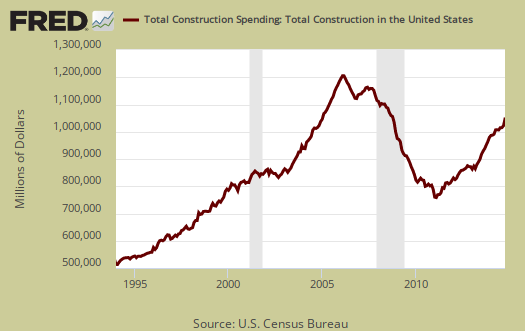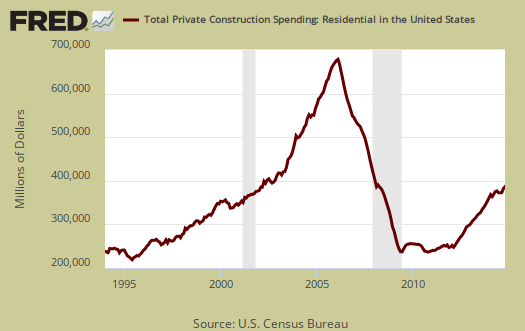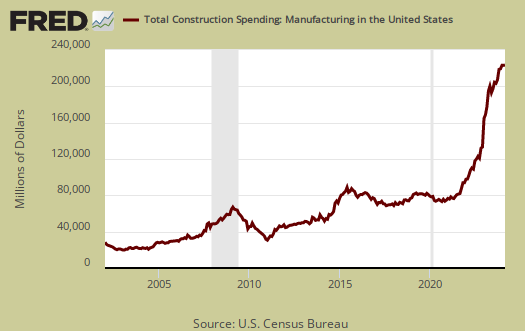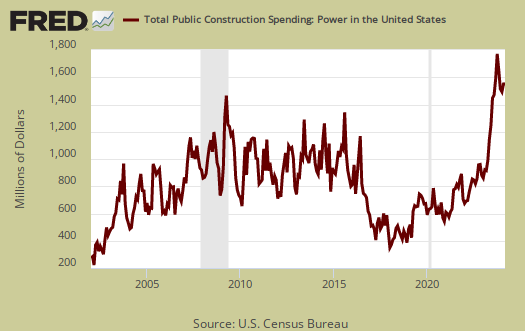The Census released the monthly construction spending report today. Spending was $971 billion in October, up +1.1% from September and an increase of +3.3% from October 2013. This is a rebound from last month with the largest gain in five months. September was revised upward from -0.4% to -0.,1%. For just 2014, spending has increased 5.8%. Construction is a monthly tally, seasonally adjusted, annualized, but not adjusted for inflation of how much money was spent on construction.

Private construction spending increased +0.6% overall, and is up +4.0% from a year ago. Residential construction was up +1.3% from September and is up +1.7% from October 2013. Below is the graph for residential construction spending. One can track the entire housing bubble rise and burst by this graph.

Private, non-residential construction decreased -0.1% for the month and 6.4% for the year.

Public construction increased 2.3% for the month and is up 1.5% for the year. Conservation & development increased 5.8% for the month and is up 32.6% from a year ago.
Below are the details of all manufacturing construction spending, both public and private. Construction for manufacturing increased 3.4% for the month and is up a very promising 22.2% for the year. Most of this is private manufacturing construction.

Total Power construction decreased -1.0% from April and is flat, up 0.7% from a year ago.

Reuters collected Economists revised GDP estimates as a result of the construction spending boom:
Economists said that suggested the gross domestic product estimate for the third quarter could be raised by 0.2 percentage point to a 4.1 percent annual rate. The government will publish revisions to third-quarter GDP growth data later this month. Spending on residential and nonresidential structures such as factories and power stations previously was reported to have made no contribution to growth.
"We see third-quarter GDP growth being revised up, with most of the upside in business investment in structures," said Ted Wieseman, an economist at Morgan Stanley in New York. Economists, who had expected construction spending to rise only 0.6 percent in October, also raised their fourth-quarter growth estimates, which now range between a 1.7 percent and 3.0 percent rate.
This economic report, is considered minor by analysts and economists, ye, it shows how investment in construction implies future economic growth. As a result, construction spending is almost a forward looking economic indicator.

Recent comments